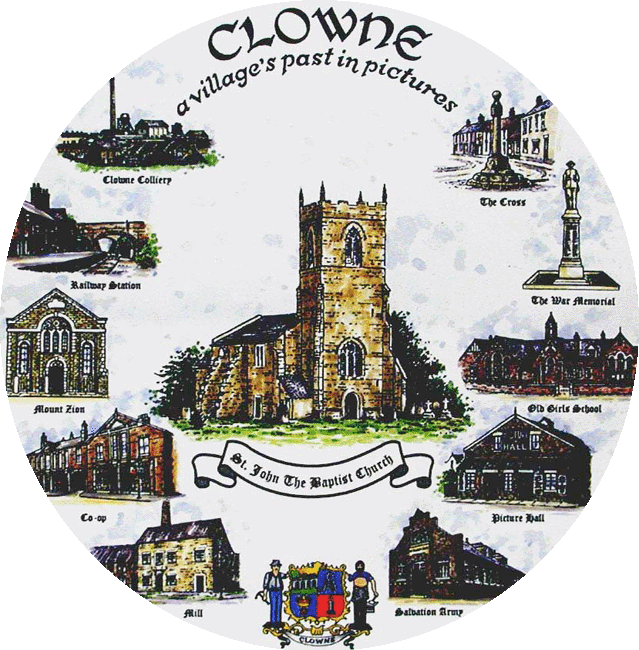|
This Commemorative Plate Has Been Commissioned
By The Clowne Local History Group
|
|
And Was Designed By Allan Bailey
|

|
CLOWNE A Village's Past in Pictures This commemorative
plate has been commissioned by the Clowne local history group Clowne
is a village situated in North East Derbyshire. Early records state
the village name as Clune, which means many springs or wells. The earliest
recorded building is the Church of St John the Baptist, built during
the reign of Stephen (1135-1154). The Cross, situated in the centre
of the village is said to date back to the 13th century. A set of stocks
and a pump once stood by the cross. 125 years ago Clowne was mainly
an agricultural settlement. In Mill Street stood Bournes Mill where
corn was ground, today on this site stands a Tesco store. After the
opening of Southgate Colliery in 1877 and the arrival of the Midland
and Lancashire and East Coast Railways the village population increased
sharply. In the middle part of the 1800's girls and boys schools were
built, which are still standing today. At the start of the 20th Century,
Clowne had a picture hall. King George V visited Clowne in 1914 with
the Duke of Portland. During the First World War, Clowne lost 97 men
and the dire effect of the Second World War
|
|
resulted in Clowne losing 34 men.
|